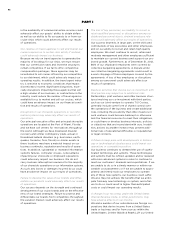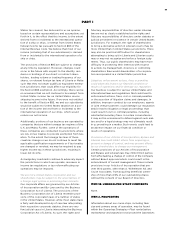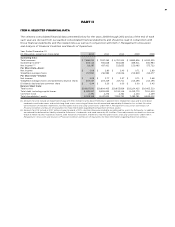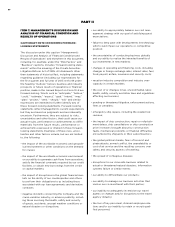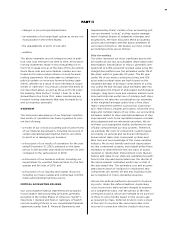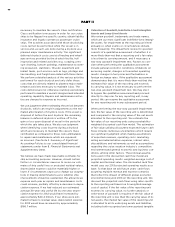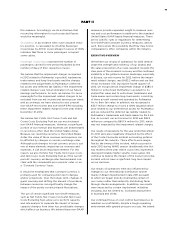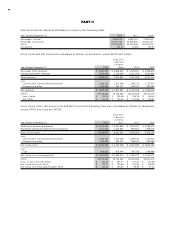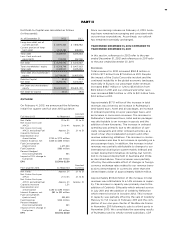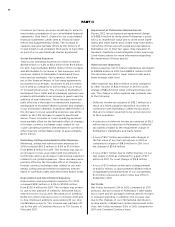Royal Caribbean Cruise Lines 2012 Annual Report Download - page 44
Download and view the complete annual report
Please find page 44 of the 2012 Royal Caribbean Cruise Lines annual report below. You can navigate through the pages in the report by either clicking on the pages listed below, or by using the keyword search tool below to find specific information within the annual report.
40
PART II
necessary to maintain the vessel’s Class certification.
Class certification is necessary in order for our cruise
ships to be flagged in a specific country, obtain liability
insurance and legally operate as passenger cruise
ships. The activities associated with those drydocking
costs cannot be performed while the vessel is in
service and, as such, are done during a drydock as a
planned major maintenance activity. The significant
deferred drydock costs consist of hauling and wharf-
age services provided by the drydock facility, hull
inspection and related activities (e.g. scraping, pres-
sure cleaning, bottom painting), maintenance to steer-
ing propulsion, stabilizers, thruster equipment and
ballast tanks, port services such as tugs, pilotage and
line handling, and freight associated with these items.
We perform a detailed analysis of the various activities
performed for each drydock and only defer those
costs that are directly related to planned major main-
tenance activities necessary to maintain Class. The
costs deferred are not otherwise routinely periodically
performed to maintain a vessel’s designed and intended
operating capability. Repairs and maintenance activi-
ties are charged to expense as incurred.
We use judgment when estimating the period between
drydocks, which can result in adjustments to the esti-
mated amortization of drydock costs. If the vessel is
disposed of before the next drydock, the remaining
balance in deferred drydock is written-off to the
gain or loss upon disposal of vessel in the period in
which the sale takes place. We also use judgment
when identifying costs incurred during a drydock
which are necessary to maintain the vessel’s Class
certification as compared to those costs attributable
to repairs and maintenance which are expensed
as incurred. (See Note 2. Summary of Significant
Accounting Policies to our consolidated financial
statements under Item 8. Financial Statements and
Supplementary Data).
We believe we have made reasonable estimates for
ship accounting purposes. However, should certain
factors or circumstances cause us to revise our esti-
mates of ship useful lives or projected residual values,
depreciation expense could be materially higher or
lower. If circumstances cause us to change our assump-
tions in making determinations as to whether ship
improvements should be capitalized, the amounts we
expense each year as repairs and maintenance costs
could increase, partially offset by a decrease in depre-
ciation expense. If we had reduced our estimated
average 30-year ship useful life by one year, depre-
ciation expense for 2012 would have increased by
approximately $40.4 million. If our ships were esti-
mated to have no residual value, depreciation expense
for 2012 would have increased by approximately
$166.7 million.
Valuation of Goodwill, Indefinite-Lived Intangible
Assets and Long-Lived Assets
We review goodwill, trademarks and trade names,
which are our most significant indefinite-lived intangi-
ble assets, for impairment at the reporting unit level
annually or, when events or circumstances dictate,
more frequently. The impairment review for goodwill
consists of a qualitative assessment of whether it is
more-likely-than-not that a reporting unit’s fair value
is less than its carrying amount, and if necessary, a
two-step goodwill impairment test. Factors to con-
sider when performing the qualitative assessment
include general economic conditions, limitations on
accessing capital, changes in forecasted operating
results, changes in fuel prices and fluctuations in
foreign exchange rates. If the qualitative assessment
demonstrates that it is more-likely-than-not that the
estimated fair value of the reporting unit exceeds
its carrying value, it is not necessary to perform the
two-step goodwill impairment test. We may elect
to bypass the qualitative assessment and proceed
directly to step one, for any reporting unit, in any
period. We can resume the qualitative assessment
for any reporting unit in any subsequent period.
When performing the two-step goodwill impairment
test, the fair value of the reporting unit is determined
and compared to the carrying value of the net assets
allocated to the reporting unit. We estimate the
fair value of our reporting units using a probability-
weighted discounted cash flow model. The estimation
of fair value utilizing discounted expected future cash
flows includes numerous uncertainties which require
our significant judgment when making assumptions
of expected revenues, operating costs, marketing,
selling and administrative expenses, interest rates,
ship additions and retirements as well as assumptions
regarding the cruise vacation industry’s competitive
environment and general economic and business con-
ditions, among other factors. The principal assump-
tions used in the discounted cash flow model are
projected operating results, weighted-average cost of
capital, and terminal value. The discounted cash flow
model uses our 2013 projected operating results as a
base. To that base we add future years’ cash flows
assuming multiple revenue and expense scenarios
that reflect the impact of different global economic
environments beyond 2013 on the reporting unit. We
discount the projected cash flows using rates specific
to the reporting unit based on its weighted-average
cost of capital. If the fair value of the reporting unit
exceeds its carrying value, no further analysis or
write-down of goodwill is required. If the fair value of
the reporting unit is less than the carrying value of its
net assets, the implied fair value of the reporting unit
is allocated to all its underlying assets and liabilities,
including both recognized and unrecognized tangible




